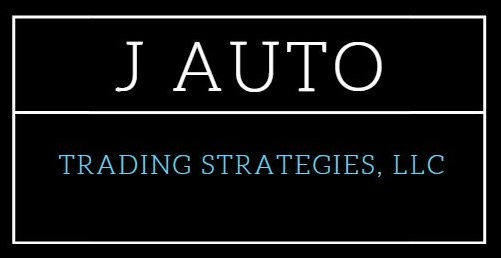It’s Not the Interest Rate — It’s Who Gets the Credit
By Julie Wade | J Auto Trading Strategies
July 11, 2025
America is being gaslit by its own central bank. The problem isn’t that the Fed funds rate sits at 4.25–4.50% — the problem is that credit for working Americans is priced at 20–25%, while Jerome Powell quietly maintains a liquidity pipeline for foreign central banks and global financial institutions.
We’re told inflation is “coming down.” We’re told the Fed has “done its job.” But ask a small business applying for a working capital loan, or a family trying to finance groceries on a credit card charging 27.99% APR — and you’ll hear the truth: the cost of money is sky-high, unless you’re a sovereign borrower or a megabank.
This is not a monetary policy that serves the American people. It’s a two-tiered financial regime—and it mirrors the 1970s in all the worst ways, with one crucial difference: back then, the Fed’s liquidity expansion benefited U.S. workers. Today, it props up foreign central banks.
The Fed Funds Rate Is a Smokescreen
At 4.25–4.50%, the Fed’s benchmark rate looks tame by historical standards. But it’s meaningless if the credit transmission system is broken — and right now, it is.
Credit cards average 24–28% APR despite historically low default rates.
Small business loans routinely price at 10–18%, with regional banks hoarding capital.
Auto loans and personal credit are inaccessible for anyone without top-tier FICO scores.
This isn’t just about high rates. It’s about a complete breakdown in domestic lending trust. Risk premia have decoupled from reality, and the system no longer allocates credit efficiently to households or small firms.
Meanwhile, foreign central banks borrow dollar liquidity at 0.05% through Powell’s FIMA facility.
Powell Is Funding Foreign Banks — And Stiffing U.S. Citizens
This is the dirty secret of the post-COVID monetary order: the Fed is still quietly backstopping the global dollar system, even as Americans suffer from inflation and credit paralysis.
The FIMA Repo Facility, launched in 2020, remains active — offering dollar liquidity to foreign central banks with no Congressional oversight.
Swap lines with the ECB, BoJ, SNB, and others ensure foreign access to dollars at rates far below what U.S. households face.
These programs suppress Treasury yields, artificially stabilize global markets, and ensure foreign governments can finance their deficits cheaply.
And who pays the price? The American consumer, who is being taxed through persistent inflation, and denied access to the very credit system their central bank is funding abroad.
This isn’t “transitory” inflation — this is imported, embedded, policy-driven inflation. And the Fed refuses to stop it.
Main Street Is Starved While Wall Street Arbitrages
Let’s be blunt: JPMorgan, BlackRock, and foreign central banks have access to free or near-free money. Working families? Not so much.
JPMorgan can borrow at near Fed funds and lend at 8–10x the cost.
Foreign institutions use swap lines and repo access to cycle back into Treasuries, monetizing U.S. deficits without bearing inflation risk.
American workers and small businesses face the worst credit conditions in a generation—and no safety net.
This is monetary imperialism. The Fed has become a lender to the world and a barrier to domestic prosperity. It is exporting liquidity and importing inflation, while U.S. entrepreneurs can’t even get a line of credit to meet payroll.
What Trump Gets Right About Tariffs and Inflation
President Trump’s critics call his proposed tariffs “inflationary.” But this is dishonest. What Trump is trying to do is restore production — to bring back the supply side the Fed destroyed.
A 10–20% across-the-board tariff corrects decades of policy failure.
A 60% tariff on Chinese goods breaks the dependency on slave-wage imports that gutted America’s industrial base.
Tariffs realign the system — forcing multinational corporations to pay American wages or exit American markets.
Yes, prices might rise. But unlike Powell’s inflation, Trump’s inflation funds American jobs, not foreign central bank balance sheets. That’s a trade-off working families are willing to make.
Tariffs are not the threat — they are the firewall. Powell’s global liquidity is the arsonist.
What Needs to Happen Now
The solution isn’t to cut rates for the sake of appearances. The solution is to rewire who gets the credit and who bears the risk. That starts by turning off the spigot to foreign borrowers and turning it back on for domestic producers.
Here’s the plan:
🔻 Immediately suspend all foreign swap lines and the FIMA Repo Facility unless explicitly authorized by Congress.
🔻 Accelerate balance sheet runoff to restore domestic yield curve discipline.
🔻 Incentivize regional and community banks to expand credit to small firms at reasonable spreads.
🔻 Raise capital costs for carry-trade megabanks profiting off global liquidity arbitrage.
✅ Implement strategic tariffs to reshore production and build durable wage floors.
✅ Deploy fiscal policy directly to households and small businesses, not via the Fed.
Conclusion: Monetary Nationalism or Monetary Subjugation
Let’s be clear: this isn’t about interest rates anymore. This is about who gets the money — and who gets left behind.
Powell has institutionalized a system where the Fed exists to stabilize global capital markets, while the American household is fed to inflation, debt, and declining mobility. Jamie Dimon applauds this because it serves his balance sheet. The Fed calls it “financial stability.” But the truth is, it’s a betrayal of the American economy.
President Trump, for all his bombast, is the only national leader demanding that production, credit, and inflation be brought back under U.S. control. His tariffs are not perfect, but they are principled. They draw a line between an economy that works for Americans — and one that sacrifices them.
This is the choice: Global liquidity for Brussels, Frankfurt, and Tokyo — or monetary sovereignty for Youngstown, Flint, and Topeka.
Choose wisely.
Copyright © 2025 J Auto Trading Strategies, LLC. All rights reserved.
The information and content provided herein are for informational purposes only and do not constitute financial, investment, legal, or other professional advice. The views and opinions expressed are those of the author and do not necessarily reflect the official policy or position of J Auto Trading Strategies, LLC or any other entity. Any reliance you place on such information is strictly at your own risk.
J Auto Trading Strategies, LLC and its affiliates, officers, directors, employees, or agents shall not be liable for any loss or damage, including without limitation, indirect or consequential loss or damage, or any loss or damage whatsoever arising from the use of or reliance on this content. Trading and investment involve significant risks, and past performance is not indicative of future results.
This content is protected by copyright law and may not be reproduced, distributed, or transmitted in any form or by any means, including photocopying, recording, or other electronic or mechanical methods, without the prior written permission of J Auto Trading Strategies, LLC, except as permitted by applicable law.





